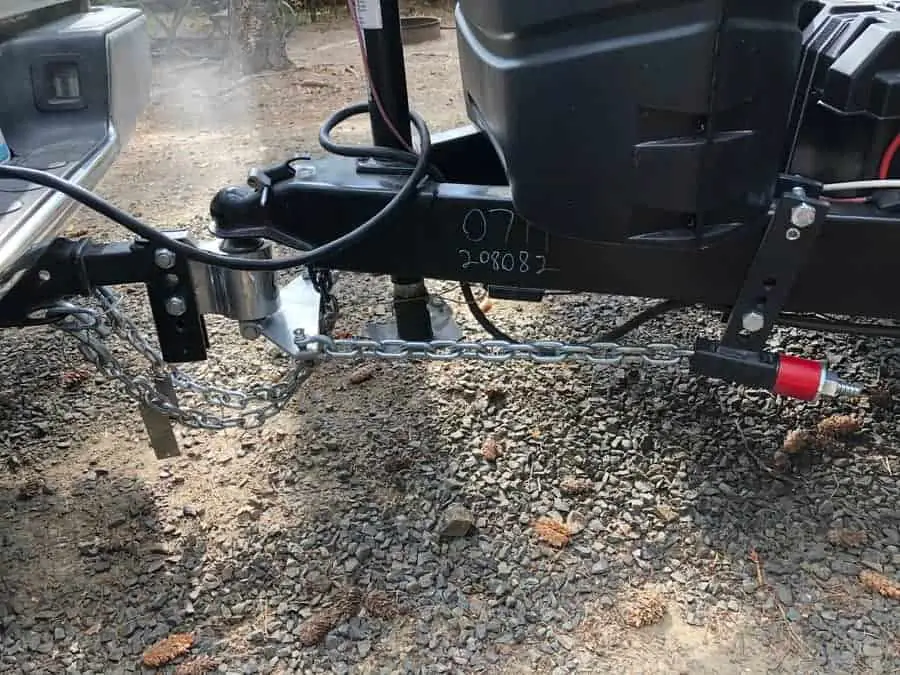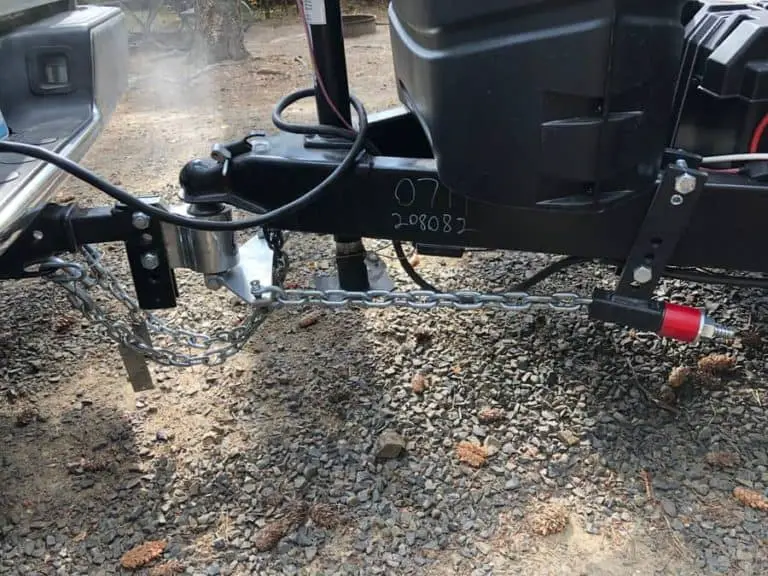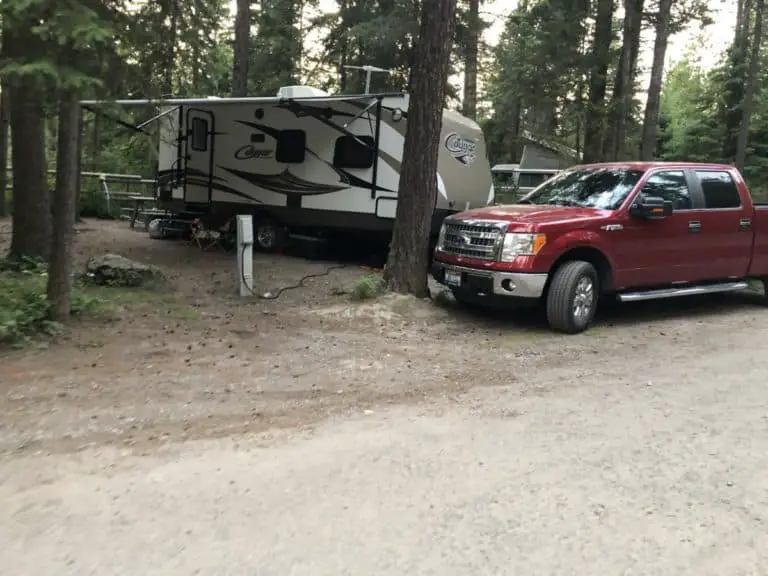Does a Weight Distribution Hitch Reduce Sway While Towing?
Whether you’re a first-time tower or a seasoned veteran who does it professionally, trailer sway is a constant fear and problem. No matter how experienced you are in towing trailers or RVs, you can never predict when a stiff breeze will come from out of nowhere. You also can’t predict when you’ll have to swerve to miss an obstacle, person, or animal in the road, and have to correct your swaying motion.
Trailer sway is one of the top causes for trailer and RV-related accidents. Luckily, certain devices and tools have been invented that reduce the risk of sway. Weight distribution hitches with sway control are one of the best tools you can implement to reduce the risk of swaying.
Because of its name, many people don’t realize that weight distribution hitches are effective tools to reduce sway. They simply think that WDHs help even out your load and make for a more even towing experience. However, because of how weight distribution hitches are designed and implemented, they go a long way in helping with trailer sway.
Does a Weight Distribution Hitch Stop Swaying?
While a weight distribution hitch certainly helps to reduce the amount of swaying your trailer or RV can have, it won’t completely stop it. Weight distribution hitches consist of a traditional ball hitch, two bars that attach from the tongue of the trailer to the hitch, two brackets, a tightening rod, and a sway bar. Here’s how they work.
- The ball hitch inserts into the receiver hitch the same way that any other ball hitch would.
- On the bottom side of the hitch on either side of it, there are two holes.
- There are two bars that are sold with the weight distribution hitch but that come separately.
- These bars are L-shaped and round on one end and flat with a chain on the other.
- The shorter side of the L, the round part, inserts into the bottom of one of the holes on the hitch.
- The flat side with the chain gets attached to the bracket on the tongue of the trailer and tightened with a separate rod.
- Make sure the bracket is attached to the proper part of the trailer and the correct distance from the hitch to the tongue before fastening.
- Before attaching and tightening the chain to the bracket on the trailer, you want to lower the lower the coupler of the trailer onto the ball of the hitch.
- After the coupler is attached to the ball, but before you lower it all the way down so that the tongue jack starts rising, you should tighten the chain of the bar onto the bracket.
- Finish lowering the trailer tongue until the jack is raised.
- If done correctly, your trailer and towing vehicle should be level from front to back.
Because of how the bars on the weight distribution hitch attach from the tongue of the trailer to the towing vehicle, it helps reduce sway. It does this because the chains that connect the bars to the trailer tongue are stiff and solid. There shouldn’t be any slack in them.
While this won’t completely eliminate trailer sway, it goes a long way in reducing it.
Does Weight Distribution Help With Sway?
Like we said before, weight distribution hitches won’t completely eliminate trailer sway, but they’ll help with it. By simply using the hitch and the weight distribution bars that accompany it, you can reduce sway. However, most weight distribution hitches are sold with a sway bar that you can optionally install.
Installing the sway bar isn’t mandatory, but it will completely eliminate trailer sway. The bar attaches from a separate bracket that gets screwed to the tongue of your trailer to the hitch itself.
The reason that many people don’t use the sway bar that comes with a weight distribution hitch is because of the downsides. They are difficult to install if you don’t have the right tools, and a sway bar will also eliminate your ability to back up and maneuver around tight corners.
The way most people see it, the weight distribution hitch helps enough with trailer sway that they never bother installing the sway bar.
How do You Reduce Sway When Towing?
The best way to reduce and eliminate sway when towing is to tow with a weight distribution hitch and the accompanying sway bar. However, if you want to skip the sway bar and use just a weight distribution hitch, here are a few other tips to reduce sway while towing.
- Don’t overload your towing vehicle or the trailer or RV that you’re towing.
- Evenly distribute weight throughout the trailer or RV that you’re towing so that the weight is evenly disbursed.
- Travel at slower speeds if you’re worried about swaying. The faster you go, the more likely you are to sway.
- Watch the road! Most swaying happens when you start going off the side of the road and are forced to overcorrect.
- It helps if your towing vehicle has a longer wheel-base.
- Read your owner’s manual and don’t exceed the towing capacity or gross vehicle combined weight rating.
How Much Does a Weight Distribution Hitch Help?
I recently went from not using a weight distribution hitch to using one to tow my 36’, 9,000-pound RV. Simply put, there was a night and day difference between the two towing experiences. The weight distribution helped so much with reducing trailer sway and stability that I’ll never tow without one again.
Like I said before, it didn’t completely eliminate sway. However, you can definitely feel increased friction and tightness when the trailer begins to sway. Having that peace of mind and increased confidence made for a much less stressful and more relaxed towing experience.
In addition to weight distribution hitches helping reduce sway because of how they’re fastened from the hitch to the trailer, they also help because of their primary purpose. They level out the truck and trailer and distribute the weight evenly so that it’s as much on the front axles as it is on the rear. The even weight distribution and tight trailer-to-truck attachment, make weight distribution hitches a massive help when towing.
When to Use a Weight Distribution Hitch
If you’re ever in doubt about whether or not you should use a weight distribution hitch, you should use one. There’s simply no other way to make for a safer and more comfortable towing experience with little to no work.
However, if you’re on the fence about using one, here’s the rule of thumb to live by. If the trailer or RV that you’re towing weighs half as much as your towing vehicle, you should use a weight distribution hitch. So, if your camper weighs 6,000 pounds and you’re towing it with a 9,000-pound truck, you should use a weight distribution hitch.
Be the first to be notified about FREE tips, hints, coupon codes, and email-exclusive information. All for FREE!









